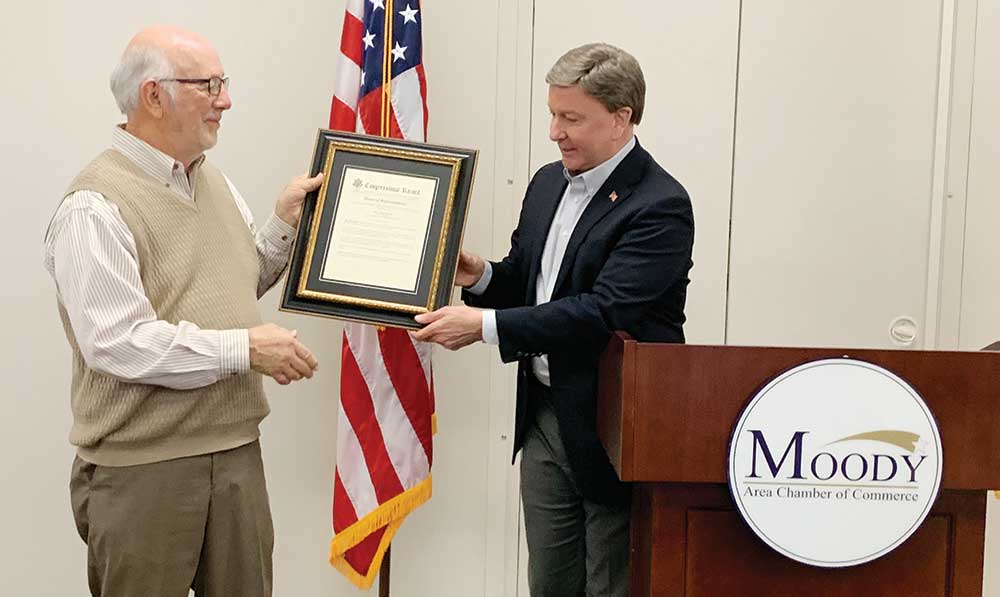A trio of St. Clair anglers make a splash at Bassmaster Classic
Story by Paul South
Submitted, staff photos
The PGA Tour has its FedEx Cup. NASCAR drivers put the pedal to the metal and trade paint gunning for The Chase.
And Matt Herren, Wes Logan and Joey Nania professional anglers with St. Clair County ties, hoped to make their mark at the 2022 Academy Sports + Outdoors Bassmaster Classic presented by Huk, where the best bass fishermen in the world gathered in hopes of reeling in the sport’s most prestigious prize, fishing’s Super Bowl.
Nania finished 13th with winnings of $15,000; Logan finished 23rd with $13,000 in winnings; and Herren finished 32nd with $10,000 in winnings.
The 2022 classic came to Lake Hartwell, a man-made body of water near Greenville, S.C., in early March. While St. Clair County has made a mark in the NFL – with San Francisco defensive end Dee Ford (Odenville) and Major League Baseball with Springville native and Detroit Tiger hurler Casey Mize, the county’s biggest pro sports splash may be in professional fishing, thanks in large part to Herren, Logan and Nania. Seven anglers who have competed on the pro circuit call the county home.
It’s not unusual in sports to see large metropolitan areas produce world-class competitors. But for a largely rural county like St. Clair that’s peppered with small towns, three world-class competitors from the county in a sport’s marquee event is worth cheering, regardless of the end results.
“It’s kind of a cool thing to think about,” said Springville’s Logan. “With our county being so small and three of us competing in it. I think it just shows the caliber of fishing in Alabama and especially in Central Alabama where our county’s located. It gives a testament to the lakes and rivers in the surrounding area about how good they are and how diverse they are.”
Located near the South Carolina-Georgia border, the 87.5-square-mile Lake Hartwell reservoir is comprised by waters from the Savannah, Tugaloo and Seneca rivers and is one of the Southeast’s largest lakes.
Hartwell’s deep waters presented a trophy-sized challenge for Classic competitors. In fact, the 2022 Classic was Logan’s first-ever tournament on Hartwell. The lake is known for its deep waters, similar to Northwest Alabama’s Smith Lake. By contrast, the lakes of the Coosa are stained and shallow.
Anglers call Hartwell a Blueback Herring lake, named for the small migratory fish that’s a favorite bite for the big bass of Hartwell. Because the herring are on the move, it makes anglers’ quest for a catch a bigger challenge. Bluebacks can be in one patch of water in the morning, another by the afternoon, taking the famished bigger fish with them.
“(The herring) roam around a lot,” Logan said. “They’re nomadic. “If you find fish on Tuesday. They’re liable to be gone by Tuesday afternoon. The fish just follow the bait.”
The 50,000-acre lake’s deep waters – a maximum of 185 feet – offers another challenge for anglers.
“It’s going to set up a little bit different than I’m used to, being from around the Coosa River, where it’s shallow fishing mostly. The baitfish and the way the fish act is going to be really different,” Logan said.
“Hartwell is a really good lake, just in general,” he added. “I got to free practice over there for a couple of days, and it seemed to have a really good population of fish in it … I know from past Classics there, it’s a really good lake.”
Herren is an Ashville resident who grew up fishing with his dad, Butch, on Neely Henry Lake. At 59, he’s one of the senior competitors on the B.A.S.S. circuit who didn’t become a full pro angler until 2003. Before that, he worked in his dad’s Birmingham body shop. He married his wife, Candy, and the couple raised two sons, Josh and Jacob.
But this year’s Bassmaster Classic will mark his 17th major championship tournament since 2003.
“To me, the tournament fishing was kind of an afterthought; I just always loved to fish. I’ve been competitive my whole life. I mean, I played sports in school … One thing led to another.”
The pro fishing game has changed since Herren was in high school and college, when tournament fishing “just wasn’t that big a deal.” Now, it’s a big money game, with tournament cash, television, endorsement deals, even video games. Hank Cherry Jr. took home a $300,000 first-prize check after winning last year’s Classic.
“I think I was 39 when I went full time. The sport has kind of evolved into something the younger guys are getting into. It’s growing by leaps and bounds,” Herren said.
But one of pro fishing’s graybeards isn’t intimidated by the young bucks he faces on tour.
“I’m still highly competitive now,” Herren said. “These young whippersnappers, I can still run with ‘em.”
Herren breaks down Lake Hartwell, much like a football or basketball coach breaks down an opponent. In fishing, the seasons, weather patterns and more are taken into account.
“Every body of water we fish will offer an angler areas that he likes to fish, styles, certain techniques. That’s how I try to go about doing my job,” Herren said. “I try to fish the techniques and patterns that are my strong suit and just see what happens … I just try to be consistent and do what I do.”
A St. Clair County transplant – Joey Nania – moved with his wife and kids to Cropwell from Washington state. In 2009, he competed in the Bassmaster Classic on Lay Lake. He met Rick Hughes, a Cropwell evangelist and “a really good fisherman.” The two became friends, and Nania visited the following summer. The combination of faith, family values and fishing lured Nania to settle in the county. He now calls Pell City home.
Nania accepted Christ at 19 after meeting Hughes. Later, Nania met his future wife, Jessica, and his career took off. He calls it “a string of blessings.” His newfound faith – belief he shares on tour, played a role in his decision to move south.
Along with his pro career, he is a fishing guide on the Coosa River system, Smith Lake and Lake Martin.
“It’s just such a great location, and it’s just the fact about Alabama. If you can learn to fish in Alabama, you can fish anywhere in the country because we have such diversity, Nania said.
Nania has fished Hartwell before, beginning with an episode of a fishing show he hosted for seven years called, Sweetwater. Hartwell is comparable to Smith Lake in Alabama, Nania said.
“I really like the size of the lake. It’s a big body of water; but it didn’t seem like overwhelmingly big. Having the mixture of spotted bass and largemouth and having multiple options that aren’t far apart, is great … If you can catch spots and have a largemouth pattern going, it’s a good way to go. And Lake Hartwell fits that bill.”
Regardless of how St. Clair’s three Bassmaster Classic competitors fared, Logan, Herren and Nania are proud to represent their home county in pro bass fishing’s Super Bowl. The trio are good friends. And all take pride in representing St. Clair County.
“It really just goes to show that fishing is deeply rooted in the South, especially this area of Alabama.” Nania said. “There’s just so many different lakes, and fishing is just sort of a way of life around here. It’s faith, family and then fishing is kind of the motto for people around here. I know Wes Logan and Matt are like that, too
“It’s really a cool thing to see all of us succeeding and has been awesome and just a total blessing.”


















